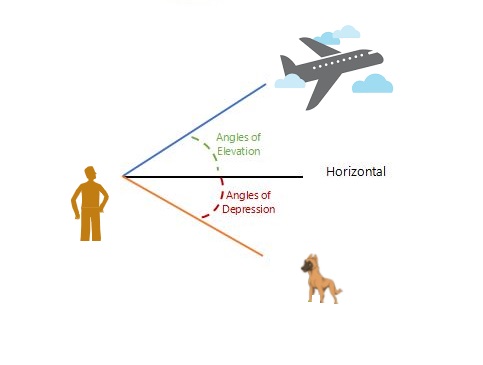Angle of Depression Definition
In geometry, an angle of depression is defined as an angle that lies between the horizontal line and the downward observation of an object from a horizontal line. In other words, An angle of depression is an angle formed "downwards" from the horizontal line of observing sight to some point of observer interest.
For example, suppose an observer observes the object below its level. In that scenario, the angle established among the horizontal line and the line of observer sight is called the angle of depression.
If a man sees a car from a building, then the angle formed between the vehicle and him is the angle of depression. In contrast, if the same man sees an airplane from the building, then the angle formed between him and the plane will be the angle of elevation.
For a more precise understanding of a concept, let us have an example below:

Note:
To get more knowledge about angles, you can use our Angle Bisector Definition.
